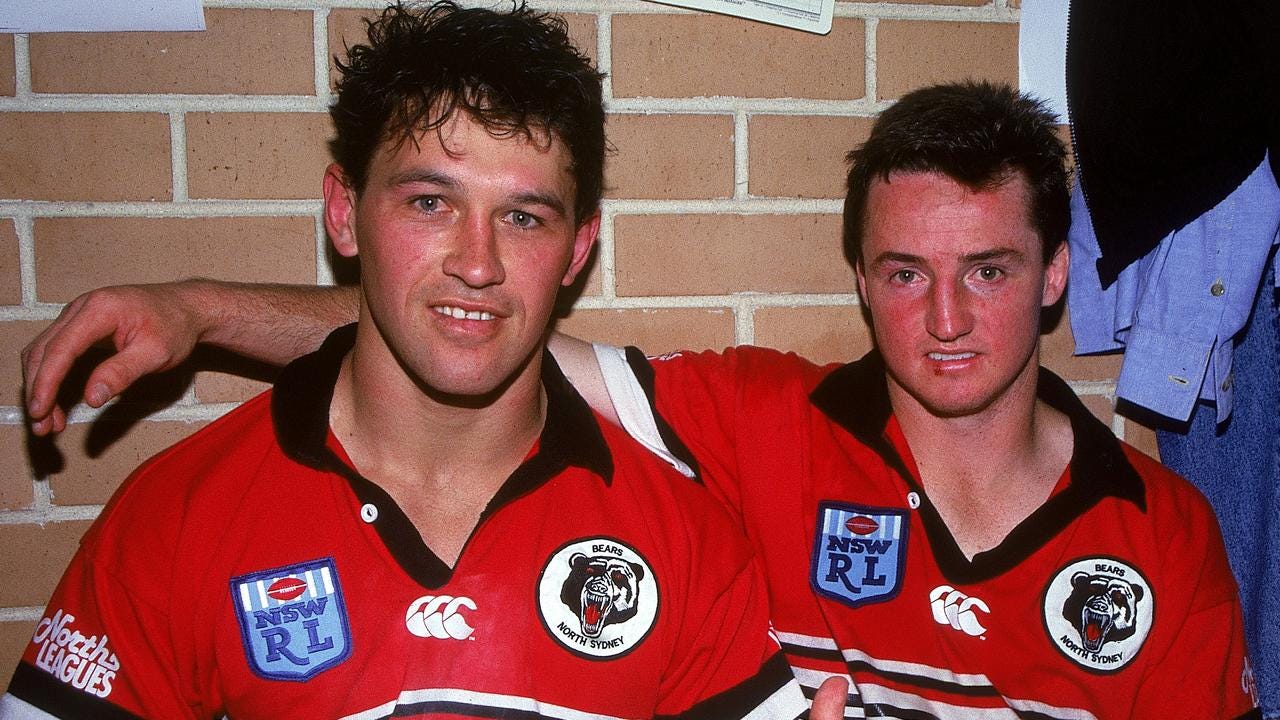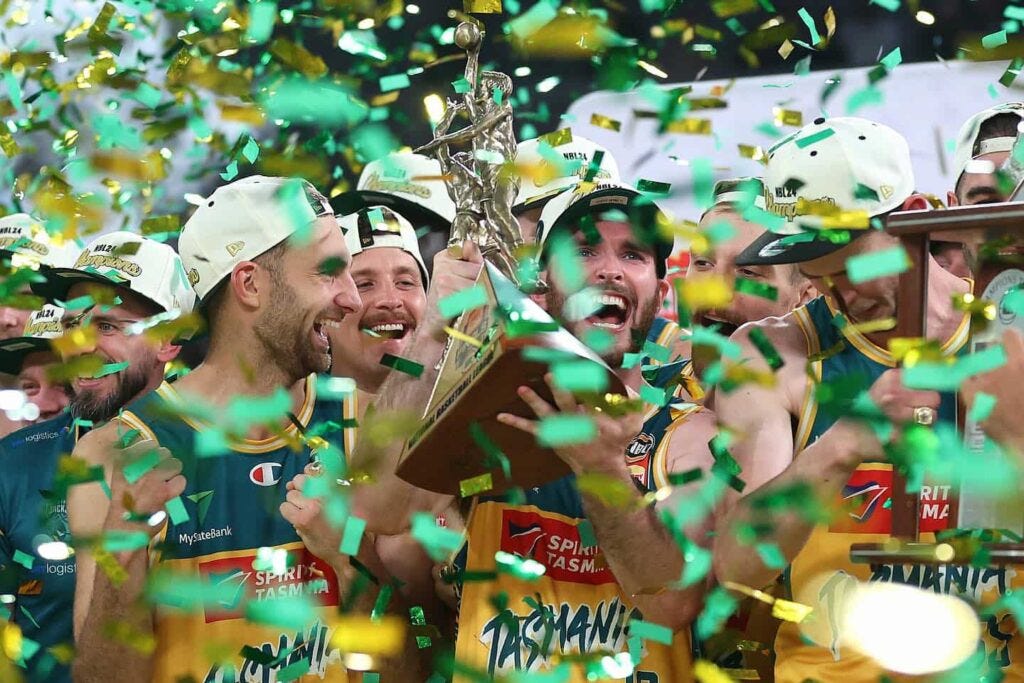Westward expansion and a Tasmanian case study
The North Sydney Sandgropers
Last week the NRL, in conjunction with the WA government, announced that the 18th franchise would be based in Perth and carry the Bears moniker, after the North Sydney club were exiled from top-flight professional rugby league following the 1999 season. A failed merger with Manly ensued under the Northern Eagles banner before ultimately disintegrating after 2002.
Manly remained, the Bears were out entirely.
By now the history of the Bears and their demise is fairly well known among rugby league fans, from their last premiership being in 1922 to their capitulation stemming from a failed move to the Central Coast as a result of stadium dramas. The Northern Eagles era was a disaster, let’s not speak about it.
The scenes at North Sydney Leagues Club last week when the return was announced were genuinely heartwarming, even if I myself have no emotional connection to the Bears or any memory of their existence (I was three after the 1999 season), but the joy it brought those people was palpable, even if I’m not buying that ridiculous 200,000 membership number, turn it up Billy Moore.
Are there Bears fans who fell out of love with the game due to their expulsion that will return with the new venture? Yes. Are there lots of Bears fans who adopted new teams and won’t return? Also yes, and probably more than the former.
But as with any expansion proposal that goes through, eyes immediately turn to its viability and how its eventual success will be measured.
Putting a rugby league team in Perth is an absolute no brainer, let’s start there. Perth has a history of rugby league with the Western Reds, and a strong contingent of east coast transplants, plus a strong contingent of English born immigrants. According to the 2021 census, Perth had a population of almost 170k English-born people, ahead of even Sydney at barely 150k. Perth may be an AFL town predominantly, but it carries a rich sporting landscape that can sustain a rival code.
There have been six regular season NRL games played at the new Optus Stadium in Perth, each drawing crowds of over 30k, while the two Origin games played there pulled over 59k people each. The interest is there, whether its curiosity or passion isn’t really relevant.
But support from the people of Perth is never going to be a question. If there’s one thing people from Perth love more than Perth itself, it’s things from Perth.
The Perth Wildcats have sustained one of the strongest followings in the NBL for over 40 years thanks to their sustained success and connection to the local community. The Perth Glory were one of the most well-supported and attended teams in the A-League in the 2010s, and people actually care about the Big Bash League with the Scorchers.
The old saying that “Perth people will go to a letter opening”, while demeaning to the city because it implies there’s nothing else to do, rings true. The people of Perth will back a local product if there’s a good reason to.
Financially, there’s opportunities for benefit with the additional broadcast slot an 18th team brings, although that will no doubt be thrown into disarray when PNG enters as the 19th team whenever that may be, and no doubt the WA government has thrown up some delicious tax incentives and funding to secure the licence. If there’s one thing we know about PVL, he is a shrewd and cunning businessman (jumps at the first dollar sign).
I actually see a lot of similarities between this Bears expansion into Perth and the landscape I live in. For those unaware, I’ve lived in Hobart for six years now, and perhaps the only more parochial group of people than Western Australians are Tasmanians.
When the NBL expanded into Tasmania ahead of the 2021-22 season, it came off the back of almost two years of local interest and lobbying to the governing body. I remember putting my name down on an expression of interest form for a team in Tasmania as early as mid-2019. The announcement of the JackJumpers, funny name aside, gave the Tasmanian community something to cling to and something distinct to call their own.
Prior to the introduction of the JackJumpers, the only sport Tasmania had was cricket, save for a couple of token Hawthorn and North Melbourne AFL games a year hosted in Launceston and Hobart. The JackJumpers instilled a central focus and unified a state. The fact it was basketball genuinely didn’t matter. And you know what happened? They were good STRAIGHT away.
The JackJumpers made the Grand Final series in their first year in existence (getting swept by a loaded Sydney Kings team, including a closeout match with half their squad missing due to COVID-19 protocols, what a time), before winning their first championship in their third year. JackJumpers tickets have become harder to find than a marquee player willing to move to Canberra (sorry), MyState Bank Arena basically selling out the season in advance.
The JackJumpers case study proves that it doesn’t matter what the outlet is, the people will still shop there.
The success of the JackJumpers has also forced other sports’ hand. Following on from the momentum in the state generated by the basketball team, the AFL capitalised by announcing their expansion plans into Hobart for the 2029 season, although that is somewhat contingent on the construction of a new stadium (sound familiar Bears fans?).
Expecting the Bears to match the JackJumpers initial success, however, is foolish and fanciful. Not only is Hobart a much shorter trip from the mainland east coast than Perth is, making it more desirable for short term relocation, but the nature of basketball talent being worldwide makes attracting players easier.
The Bears are going to have their own struggles signing marquee players, let’s be realistic. If Canberra can’t secure a signature worth a damn when they’re only a three hour drive from Sydney, what’s the expectation for a city on the other side of the country? The Dolphins couldn’t sign any notable Queensland players despite the lure of Wayne Bennett and a Brisbane residence.
Will players move? Of course they will, but I’m boldly going to claim that those predicted 2027 team lists will be more wrong than right.
It’s a short runway into their professional debut, assuming 2027 is the actual commencement date. If we learned anything from the Dolphins expansion, a team needs the time to get all the overheads in order. We’re under six months away from the Bears legally being allowed to negotiate with players and thus far all we have is a proposed home ground.
The Dolphins have also been bandied about as an example of a team being competitive right away. Now I’m all for rewriting history when it suits, but the Dolphins have come 13th and 10th in their first two seasons. Sure they won their first three games, including that rousing victory over the Roosters in their club debut, but only won six more games the rest of the way, including finishing the season winning only two of their last 12 games. They crashed hard, and no early season mirage hides that.
Tempering expectations to ensure long term viability is the Bears best chance. This shouldn’t be viewed as a short term investment, but rather a rare and brave foray into a non-traditional league market, something not done since the introduction of the Melbourne Storm almost 30 years ago.
I also went back and forth on the latching on of the Bears but I’ve decided I’m all for it, provided they allow the new club space to breathe and grow organically. There’s no need to play a meaningful game at North Sydney Oval, a ground so outdated it makes Leichhardt Oval look like Allegiant Stadium. Have a ceremonial trial there once a year, sure, but the Bears will be in Sydney frequently enough to usurp the need to play in a tinderbox.
If the price for Western Australian expansion is the Bears moniker and a token trial at NSO, then that’s a price I’m willing to pay. The history of the Bears means nothing to me personally but using it to expand into a genuine growth area feels like a smart move. It gives a club an established history and supporters (just not 200,000 of them), while allowing space for a new generation of footy fans to be converted.



